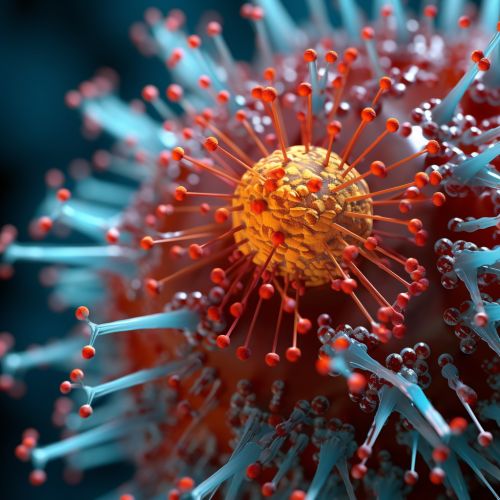Virus Structure
Introduction
A virus is a submicroscopic infectious agent that replicates only inside the living cells of an organism. Viruses can infect all types of life forms, from animals and plants to microorganisms, including bacteria and archaea. The study of viruses is known as virology, a specialty within the field of microbiology.
Structure
Viruses are composed of a core of genetic material, either DNA or RNA, surrounded by a protective coat called a capsid which is made up of protein. Some viruses also have an outer envelope composed of lipids. The shapes of viruses range from simple helical and icosahedral forms to more complex structures.


Genetic Material
The genetic material within a virus can be either DNA or RNA, and can be single-stranded or double-stranded. The genetic material contains the information necessary for the virus to replicate by instructing the host cell's machinery to produce new viruses. The type of genetic material a virus has determines the methods the virus uses to replicate. For example, DNA viruses usually use the host's DNA and RNA synthesizing machinery to replicate, while RNA viruses usually carry their own enzymes to transcribe their RNA into DNA, which is then inserted into the host's genome.
Capsid
The capsid is the protein shell that encloses the genetic material of a virus. It is composed of protein subunits called capsomeres. The capsid protects the genetic material and aids in its transfer between host cells. Capsids are structurally diverse, with different shapes and sizes, but they are always composed of protein subunits arranged in a precise and highly repetitive pattern around the nucleic acid.
Envelope
Some viruses, known as enveloped viruses, possess a lipid bilayer membrane, known as the envelope. This envelope is derived from portions of the host's cell membranes (phospholipids and proteins), but includes some viral glycoproteins. Enveloped viruses are usually more virulent than non-enveloped viruses as they have an additional layer of protection against the host's immune system.
Replication
Viruses replicate through a process involving the infection of a host cell, replication of the viral genome, assembly of new virus particles, and release of these particles to infect more cells. This process varies greatly between different types of viruses and is often a complex, multi-step process.
Classification
Viruses are classified into families and genera based on their morphology, chemical composition, and mode of replication. The International Committee on Taxonomy of Viruses (ICTV) is responsible for the classification and nomenclature of viruses.
Evolution
Viruses evolve through changes in their DNA or RNA, often through errors in replication or through a process known as genetic recombination. This high mutation rate allows viruses to quickly adapt to changes in their host environment.
Interactions with Host Organisms
Viruses can cause a wide range of diseases in their host organisms. They can also alter the host's biological processes and can even cause the host cell to self-destruct in a process known as apoptosis.
